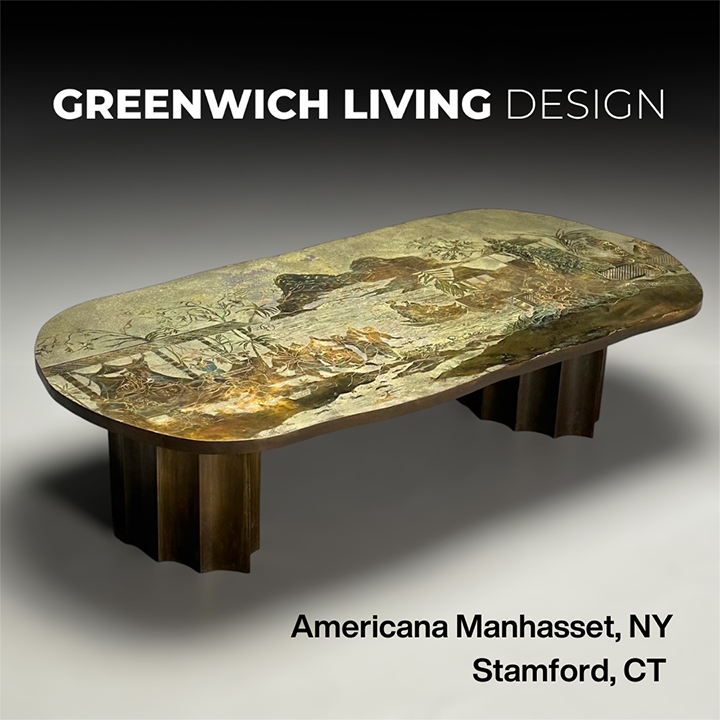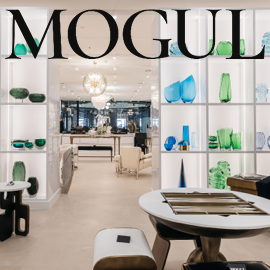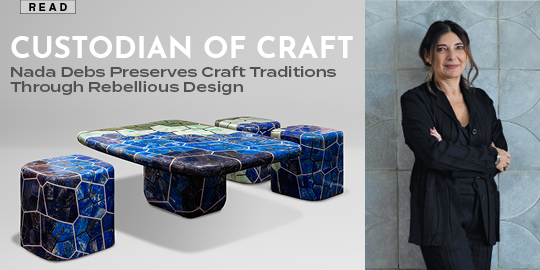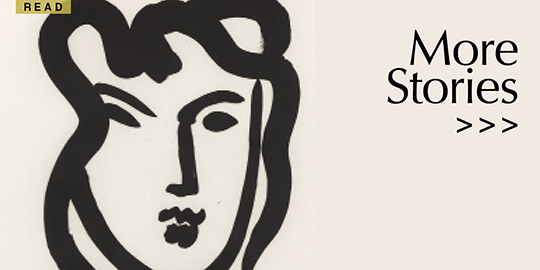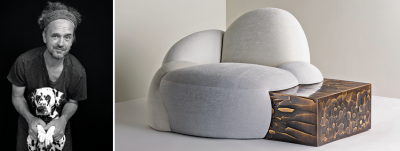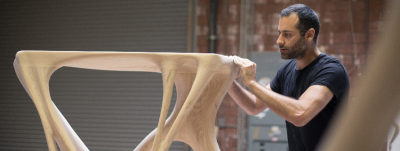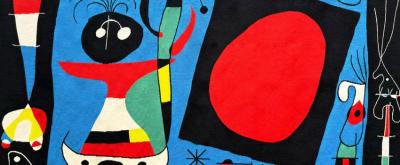The Myth of G. Gustemer and the Recognition of George Gassner
The charming folk portrait of a little girl in a blue dress holding an orange (Fig. 1) has been a part of my life for over forty years. It was purchased in the early 1970s by my mother, Peggy Schorsch, from Kenneth and Stephen Snow, well-known father and son antiquarians from Newburyport, Massachusetts. The Snows had acquired the portrait locally. It was believed to have been painted by an itinerant artist who had lodged with the family of the little girl in Newburyport over several weeks, during which time he also painted portraits of her parents. These details were bolstered by an inscription on the back of the canvas, thought to read “G. Gustemer – Newberry Port” (Fig. 1a). In 1977, my mother sold the portrait to collectors Frank and Karen Miele,1 and several years later, we reacquired it for another private collector.2 Since then, a larger group of closely related but unsigned portraits have come to light, some bearing Boston canvas maker stencils, but all efforts to locate or identify the artist “G. Gustemer” over several decades proved fruitless.
A tipping point in the quest for the elusive G. Gustemer came in September 2013, when we acquired the double portrait of a brother and sister holding hands (Fig. 2). Unlined, on its original stretchers, and in its original frame, the portrait held two noteworthy clues on the back of its canvas: a stencil and a chalk signature. The inked stencil indicated that it was “Prepared by/Morris/No. 17/Exchange.” The art supply shop of Charles A. Morris was located at this Boston address only in the year 1849, indicating the earliest date the portrait could have been painted.3 Of the chalk signature, only “G. G––er” was distinguishable, but it was enough to suggest that here was a second signed work by “G. Gustemer.” Recognizing the promise in this discovery, and seeking a fresh perspective, we consulted noted folk-art researcher Deborah M. Child, who interpreted the signature as “G. Ga–sner.” 4 The inscription of the first portrait was reexamined and found to be “G. assner/Newberry Port,” proof that these portraits were instead painted by George Gassner, an artist practically unknown to students of American folk painting. Although Gassner has been listed as an American portraitist since at least 1941, his biography contained factual errors, and the significance of his complete body of work and stature as a folk painter remained unrecognized.5
While earlier biographies of George Gassner have identified him as a German immigrant, recently uncovered documentary evidence indicates his place of birth as New York City in 1811,6 probably the son and namesake of a grocer listed in the 1815 New York City directory. George Gassner next appeared in the historical record some eighteen years later, in Hartford, Connecticut, where he was married on March 17, 1829, to Eunice Hawley, a resident of Lowell, Massachusetts, where the couple settled,7 and produced one child, Esther Anne Gassner (1833–1894). Though based in Lowell, Gassner led the life of an itinerant portraitist, working along routes that included central Massachusetts, Vermont, and along the Massachusetts and Rhode Island coastlines. During the mid-1830s, Gassner advertised his services as a portrait painter in a series of newspapers in Bristol and Newport, Rhode Island, and Nantucket, Massachusetts (Fig. 3). His advertisement in the June 20, 1835, edition of the Nantucket Inquirer stated that “George Gassner, Portrait Painter, From New York––will make a short tarry in this place, for the purpose of persuading his profession. Specimens can be seen at his Room, over Mr. E. M. Gardner’s Store. All favors will be thankfully acknowledged.” Between August 6 and September 30 of 1835, he advertised in the Rhode Island Republican: “Portrait Painting. George Gassner, Artist, Respectfully informs the Ladies and Gentleman of Newport and its vicinity, that he has taken a room over Henry and Wm. Barber’s Store, in Thames Street for the purpose of pursuing his profession. All favors thankfully acknowledged. A few specimens of his work can be seen at his room.”
Although Gassner chose the typical course of an itinerant portraitist, he also sought out larger and more profitable artistic ventures. At the age of twenty-six, he undertook his largest and most ambitious known work (Fig. 4), an accurate eight foot by five foot copy of Gilbert Stuart’s (1756–1828) portrait of George Washington, commissioned by the Rhode Island General Assembly in 1800, a variation of Stuart’s 1796 Lansdowne portrait.8 Gassner envisioned his enormous replica as a centerpiece for the House chamber of the Vermont State House built in Montpelier in 1833. He painted it ahead of an official commission and priced it at $500. The legislators vote on the issue resulted in a deadlock, with the tie breaking vote cast by Lieutenant Governor David Camp. In 1837, Gassner’s Washington portrait became the first work of art purchased by the state of Vermont.9
Gassner’s Washington portrait suggests that he possessed the technical skills to paint portraits in an academic tradition. Whether he had an artistic preference for working in a simplified folk art style, or recognized a larger and perhaps more profitable market for less expensive portraits, is unknown. He may have been influenced in his decision by the flourishing careers of contemporary itinerant portraitists like Erastus Salisbury Field (1805–1900), William Matthew Prior (1806–1873), and Ammi Phillips (1787–1868), who collectively turned out literally thousands of folk portraits over long and prosperous careers.10 The perceived success of folk portrait painters did not go unnoticed by their acclaimed academic competitors, famously acknowledged by the painter John Vanderlyn (1775–1852) in an 1825 letter to his nephew: “Were I to begin life again I should not hesitate to follow this plan, that is, paint portraits cheap and slight, for the mass of folks can’t judge of the merits of a well finished picture, I am more and more persuaded of this. Indeed, moving about through the country as Phillips did, and probably still does…” 11
The earliest dated portraits by George Gassner are a pair (Figs. 5, 6),12 inscribed at lower left, “Taken by G. Gassner 1834.” Their formalized composition is offset by anatomical abstraction, most evident in the dramatically sloped shoulders hidden beneath a shawl in the likeness of the woman. By the mid-1840s, Gassner had developed a more polished and recognizable style for his portraits, typically depicting standing children posed against plain dark backgrounds (figs 1, 2; Figs. 7, 8), their feet distinctively positioned at a set angle on slanted floorboards, with figured carpet (Fig. 9), and occasionally, a minimal exterior view (Fig. 10). Two portraits are horizontal compositions incorporating multiple sitters (Figs. 11, 12). Simplified and often abstract rendering of hands are a common characteristic of the portraits. Gassner often used store-bought canvases, with a number of the portraits having markings from Boston art supply firms. Original frames observed consist of molded mahogany veneer with gilt liner; simple molded gilt; and molded with elaborate carved and gessoed gilt. At least one is known with painted and gilt-stenciled decoration that may be original.
Eunice Hawley Gassner died on August 30, 1836, and a little over a year later George Gassner was remarried to Emeline S. Cooley in Enfield, Connecticut, on September 21 1837. The couple relocated from Lowell some ninety miles southwest to the town of Chicopee Falls near Springfield, Massachusetts.13 The couple produced two sons, George born in 1838 and James Christian in 1840. In search of a broader client base, Gassner returned to Lowell in 1844, where he was a boarder at S. P. Bean’s and later, at 15 Hurd Street, variously listed in the city directories as a portrait painter and artist.
In about 1850 Gassner portrayed the entire Colby family of Lowell, both the living and the dead (Figs. 12–14).14 Mr. and Mrs. Francis M. Colby are seated together on a neoclassical couch in a horizontal format. The full-length portraits of the Colby children, one living and the other deceased, are Gassner’s most complex likenesses. Arvilanah Colby (fig. 13), who died of cholera infantum in 1844, just shy of her second birthday, is portrayed by Gassner as she would have appeared about age five or six and wearing age-appropriate attire. Her portrait is inscribed at lower left “Avrillannah [sic] Colbey Died July 18, 1844 Aged One Year 10 Months & 2 days/Painted by Geo. Gassner.” Her brother Francis M. Colby Jr. (fig. 14) was born June 7, 1846, and is similarly dressed, but appears to be a bit older. These portraits are markedly different from the others painted by Gassner, with their brighter overall palette and with the subjects depicted outdoors. The Colby children stand before expansive landscape backgrounds, a variation from his standardized formula, which may have been an attempt to distract the viewer from the hard reality that the charming little girl in red was painted about six years after her death, her facial features possibly copied from another portrait or daguerreotype.
Throughout the 1850s Gassner maintained studios in Chicopee, Boston, and Springfield. The 1850 census records him residing in Chicopee, with his wife Emeline, age 31, and children, Esther, 18, George, 12, and James, 10. In 1856, Gassner was listed as a portrait painter with a studio at 265 Washington Street in Boston, and in 1860, as an artist residing in Chicopee with his mother-in-law, wife, and one son. Gassner was last recorded as a painter, boarding at 14 Court Street, in the 1861 Springfield, Massachusetts, directory. Although undated, the portrait of a young girl in a blue dress holding flowers (Fig. 15) may represent the style he painted in during the later years of his career.15 Gassner died from complications from diabetes on August 25, 1861, at Chicopee Falls, Massachusetts.
With this new research, a more complete and accurate biography of George Gassner has emerged and the body of his work can now be fully appreciated. Finally unmasked and fully revealed, the portraits of George Gassner deserve to take their rightful place alongside his equally talented but far better-known contemporaries.
David A. Schorsch has been dealing in and researching Americana for more than thirty-five years. He is the author of a series of catalogs and articles devoted to various categories of American antiques, and was a contributor and co-editor of the two volumes of Expressions of Innocence and Eloquence, Selections from the Jane Katcher Collection of Americana (2006, 2011). Since 1995 he has been affiliated with Eileen M. Smiles.
This article was originally published in the Anniversary 2015 issue of Antiques & Fine Art magazine, a digitized version of which is available on afamag.com. Antiques & Fine Art, AFAmag, AFAnews, and AFA Publishing are affiliated with InCollect.com.
2. David A. Schorsch, “Living with antiques, A collection of American folk art in the Midwest,” The Magazine Antiques (October 1990), 781.
3. 1849 Boston City Directory, 212.
4. This article is largely based on historical and biographical research contained in a report by Deborah M. Child prepared for David A. Schorsch, dated October 6, 2013. We gratefully acknowledge the additional research assistance of Linda Paleias, Brooklyn Museum & Library; Nicole Chalfant and Kristin Weiss, Historic New England; Clayton Pennington; Eileen M. Smiles; Tom Yost; and Maggie Humberston, Lyman & Merrie Wood Museum of Springfield History.
5. Clara Endicott Sears, Some American Primitives: a study of New England Faces and Some Folk Portraits (Boston, Houghton Mifflin, 1941), 289.
6. Gassner’s death record states his place of birth as New York City. The census records and those of his children also cite his place of birth as New York. Additionally the death record of his son, George Gassner Jr. notes that his father was born in New York.
7. 1829 marriage record from Lowell, Massachusetts. 1830 notices of letters in post office in Lowell, Massachusetts, Lowell Mercury (1, no. 9), 4.
8. The Rhode Island General Assembly commissioned two portraits in 1800 to commemorate Washington’s death in 1799. One painting is presently in the State Reception Room of the new State House in Providence, and the other has been on display in the Senate Chambers of the Old Colony House in Newport since 1802. The monumental and iconic “Lansdowne” portrait of George Washington was painted in 1796. It is so named because it was a gift to the Marquis of Lansdowne, an English supporter of American independence, by Senator and Mrs. William Bingham of Pennsylvania. Although Stuart made several replicas, the original is in the collection of The National Portrait Gallery, Smithsonian Institution, Washington, D.C., acquired as a gift to the nation through the generosity of the Donald W. Reynolds Foundation.
9. Kevin J. Kelley, “Portrait of a State,” www.sevendaysvt.com.
10. Some other well-known itinerant portraitists known to have worked at the same time and locations as Gassner were Joseph Goodhue Chandler in Boston, Samuel P. Howes in Lowell, and Joseph Whiting Stock in Springfield.
11. Mary Black, Barbara C. and Lawrence C. Holdridge, Ammi Phillips: Portrait Painter 1788–1865 (New York: Clarkson N. Potter, Inc., 1968), 14.
12. The second earliest dated work by Gassner is a portrait of a young lady inscribed on reverse “Painted in 1839 by G. Gassner” was pictured in an advertisement for Joy Piscopo Antiques in Maine Antique Digest (April 1976), 31-A.
13. Emeline S. Cooley was the daughter of Chester Cooley and Cynthia Bliss of Chicopee Falls, Massachusetts. Emeline and George likely relocated to be closer to her family.
14. Though it is theoretically possible that the portraits were painted over a period of years, 1844–1852, it is unlikely given the fact that the canvases are all identical in construction, texture of fabric weave, paint application, and their matching style.
15. Stylistically, the latest portraits by Gassner are a pair of circa-1855 portraits identified as Mr. and Mrs. Johnson, each seated in oval-back upholstered rococo revival side chairs, and with printed paper label affixed to the stretcher (“J. J. Adams /Brush Manufactory/Washington Street/Boston”), inscribed in ink, “Geo. Gassner /Milford/Ma/with c---.” Sold by Merrill’s Auction Gallery, Williston, Vermont (June 28, 2014, lot 263). See http://invaluable.com/auction-lot/george-gassner-1811-1861-pair-of-o-c-portraits-263-c-fdf0e5cc1f.




